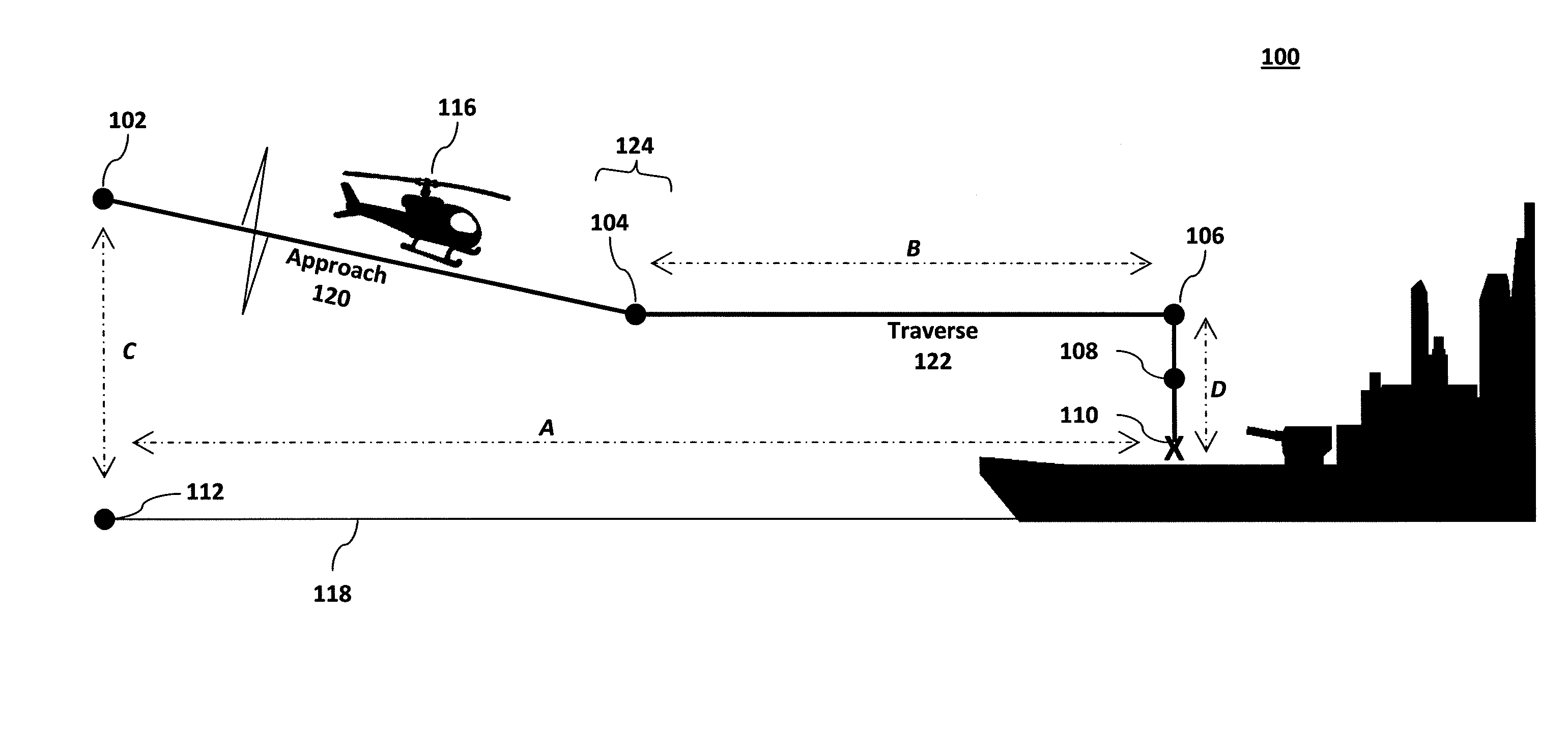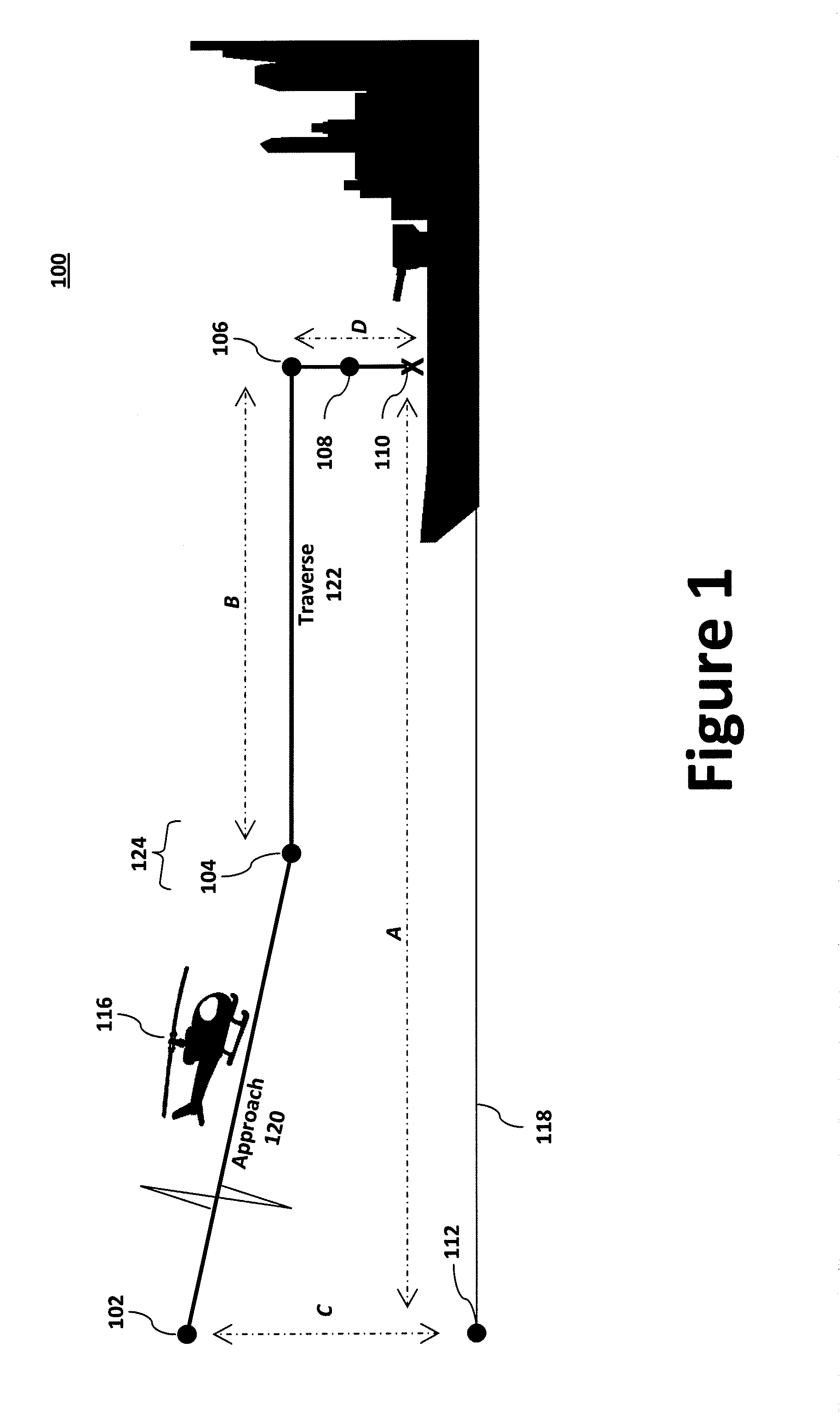System and methods for automatically landing aircraft
a technology of automatic landing and aircraft, applied in the direction of process and machine control, using reradiation, instruments, etc., can solve the problems of aircraft diverting from the intended host platform, multi-million dollar assets having to be ditched at sea, and based landing systems susceptible to component failures
- Summary
- Abstract
- Description
- Claims
- Application Information
AI Technical Summary
Benefits of technology
Problems solved by technology
Method used
Image
Examples
example 1
[0057]An example landing sequence 100 is illustrated in FIG. 1. The landing operation 100 starts at the initialization point 102 with the aircraft 116 in flight at an altitude C (e.g., 300 to 1000 feet, more preferably 400-700 ft, even more preferably 500 ft) and a distance A (e.g., 1 to 1.5 nautical miles) within 45° of the stern of the vessel 114. Using one or more sensors, the aircraft 116 may determine, or receive, the vessel 114 range and vessel 114 bearing relative to the aircraft 116. The aircraft 116 may approach the vessel 114 at a predetermined closing speed (e.g., 40 knots with a glide angle of about 3°). Using a computer-implemented algorithm coupled with one or more onboard sensors, the aircraft 116 can determine the aircraft groundspeed and aircraft position in a local coordinate frame. Similarly, the aircraft 116 may determine vessel position and vessel velocity in the local coordinate frame from the vessel range, vessel bearing, aircraft groundspeed, and aircraft pos...
example 2
[0059]Another technique in providing a VTOL landing system that can operate on a variety of vessels without knowledge of vessel type includes the generalization of the initialization point 102 and Perch Point 104 in the landing sequence into locations that are independent of vessel geometry. FIG. 2 illustrates a modified landing sequence 200, which is similar to that shown in FIG. 1, but with a change in the specification of the initialization point 102 and Perch Point location 104. While the baseline Perch Point 104 was previously specified to be distance D above the deck in landing sequence 100, such an approach may be vessel-dependent since the deck height can vary from vessel to vessel. Therefore, a generalized Perch Point 104 of landing sequence 200 may be specified to be distance E (e.g., 70 ft) above sea level 118. This eliminates dependency on deck height while ensuring that the Perch Point 104 will be sufficiently high above the deck of a given vessel 114. For example, whil...
PUM
 Login to View More
Login to View More Abstract
Description
Claims
Application Information
 Login to View More
Login to View More - R&D
- Intellectual Property
- Life Sciences
- Materials
- Tech Scout
- Unparalleled Data Quality
- Higher Quality Content
- 60% Fewer Hallucinations
Browse by: Latest US Patents, China's latest patents, Technical Efficacy Thesaurus, Application Domain, Technology Topic, Popular Technical Reports.
© 2025 PatSnap. All rights reserved.Legal|Privacy policy|Modern Slavery Act Transparency Statement|Sitemap|About US| Contact US: help@patsnap.com



